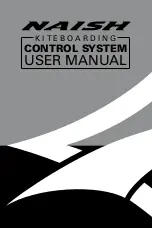
WEIGHT AND BALANCE
Nothing affects the way a plane flies more than weight and
balance. Failure to perform this procedure may result in an
aircraft that is at best difficult to control, and at worst impossible
to fly. Even a small change in the balance point makes a large
change in stability. For your first flights we recommend using a
balance point at the forward end of the center of gravity (C.G.)
range. This location will provide the most stability. As your
comfort and skill increase slowly move the C.G. aft to increase
the control response.
BALANCE
The balance range for the Rearwin is the width of the wing tube. Wrap a
piece of wire around the tube under the top hatch and lift the plane off the
ground. It should hang from 10-degrees nose down to 10-degrees nose up.
CONTROL THROWS
With your radio on, center all trims and adjust the clevises so all control
surfaces are straight. Measure the control surface movement at the
widest part of each surface. Use the servo horns and bell crank holes to
adjust the control throw. For your first flights the control throws should
be set to the following:
Elevator 1-inch up / down
Rudder 1 3/4- inch right / left
Aileron 1-inch up / down
MOTOR SET UP
Be sure the motor is properly broken in using the manufacture instructions.
Set the throttle throw to shut the motor off when the trim is pulled down and
idles reliably with the trim up.
CONGRADULATIONS you are now ready for test flights.
Before leaving for the field be sure your batteries are fully charged and you
have all the required support equipment (fuel, starter, glow driver, etc.).
11




























